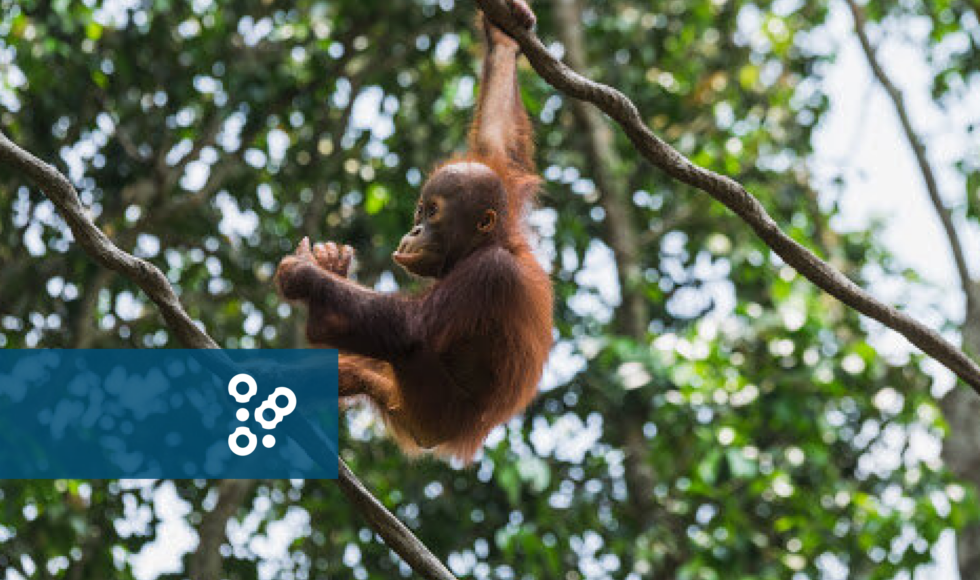By Rens Masselink, head of operations at Satelligence
At Satelligence we help companies and NGOs around the globe to end deforestation with satellite based information. Reliable, realtime and relevant. But when we sit down and talk to our customers these 3 questions always pop up:
- “How do you use satellites to detect deforestation?”
- “How are you able to monitor the entire world?”
- “How do you turn that data into information we can use?”
Basically, what they ask is how we move from a satellite image to a deforestation alert that is relevant for their business.
We believe it’s important to be transparent about how we work. That is why in this blog we explain how we create deforestation alerts from satellite images. How does a satellite see the world? How does our processing engine use Iterative Bayesian Updating to detect forest cover change? We go into why we use cloud computing so we can monitor the entire world in a matter of hours instead of months. And, finally, we discuss how we convert detected changes into deforestation alerts that are relevant for your business or organisation.
How a satellite sees deforestation
Let’s say you are interested in detecting deforestation in the Leuser National Park, on the island of Sumatra, Indonesia. The region is known for its biodiversity and its most famous inhabitant: the orangutan. In our 3rd blog in this series we go more in depth about how our monitoring system is used to help a local NGO protect the habitat of this majestic animal. In the pictures below you can see two optical satellite images (Sentinel-2) that are taken on the edge of Leuser National Park. The picture clearly shows that some areas have changed between January and December 2019.
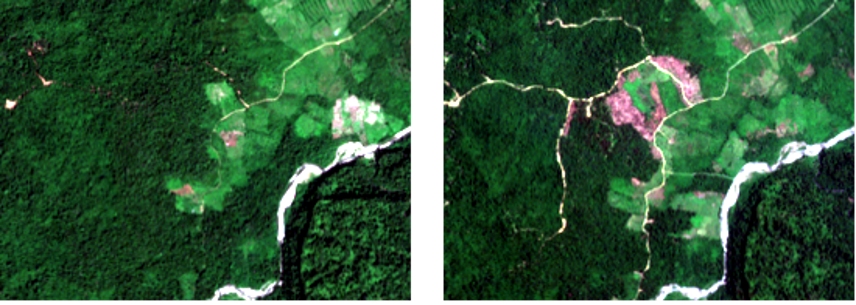
Before (September 2018) After (January 2019)
Satellite images (Sentinel-2) showing forest (green) on the left picture, going to deforested patches and roads on the right picture. The deforested patches look red/brown (typical tropical soil color) and roads look white/yellow.
Photo signals
Let’s take a closer look at how a satellite ‘sees’ forest changes. Satellites ‘take photos’ of the earth’s surface and transform them into signals. In the figure below you see the signal from a radar satellite called Sentinel-1 through time. This type of satellite is perfect for working in tropical areas, because it can look through the clouds!
Radar signals that come back from forests are higher than signals that come back from deforested areas. Knowing this, can you now see when the trees in this area were cut in the figure below, which shows a radar signal for a pixel in the area shown above?
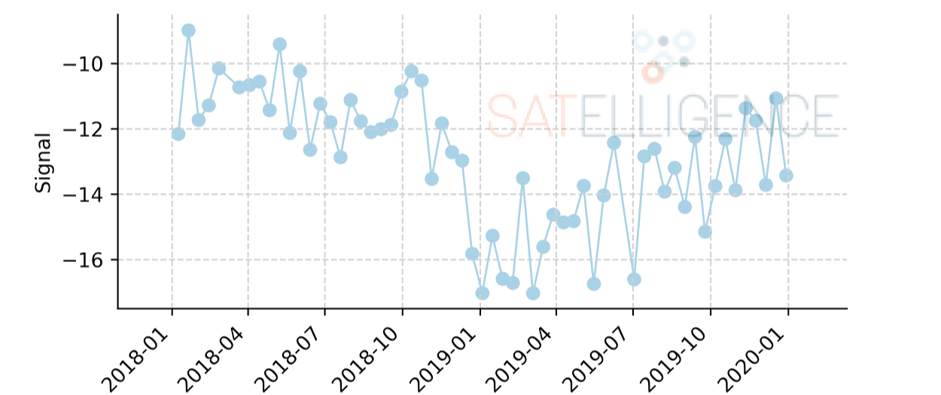
Signal of a Sentinel-1 radar satellite through time over a deforested area.
Probability analysis
Just as we can see the change in the signal, so can an algorithm. The algorithm we use is called ‘Iterative Bayesian Updating’; a method that was first applied to radar satellite images for deforestation detection by Wageningen University, in collaboration with Satelligence[1].
In short, this method calculates the probability that an area is deforested and “stacks” these probabilities in an iterative way to have a higher degree of certainty about the deforestation event. The method first ‘flags’ pixels as possibly deforested, which can be confirmed or rejected with a later measurement. When we apply the Bayesian Iterative Updating method to the deforested area near the Leuser National Park we can see it in action. In an extended version of this blog we explain more in detail what the method exactly does, for those of you who want to dive a bit deeper.
Bayesian Iterative Updating in action
In the animation below we see the values as measured by the satellite for the individual dates. We can also see what these values mean in terms of probability of deforestation (P Deforestation) and the probability as determined by the Bayesian Iterative Updating method (P Bayesian IU).
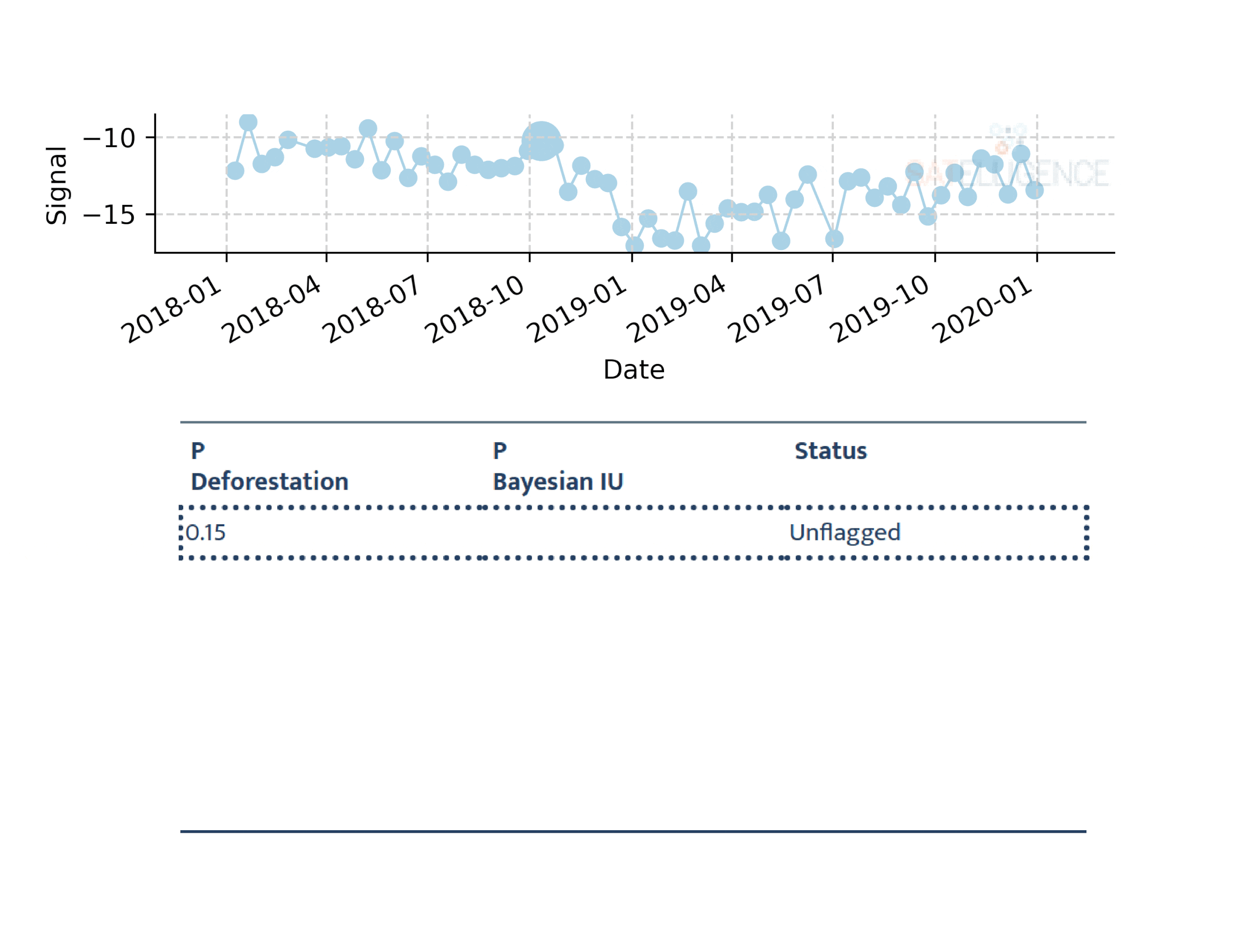
In the third row, the algorithm flags the value as a possible deforestation event, but it is not sure yet. In the next measurement, it seems as though the signal has increased again, so there might not be deforestation. In the following two measurements, however, we see the signal decrease again, and this time the algorithm is sure there has been deforestation; it confirms the deforestation event. We use the flag date as the date of deforestation, because that is the first time we saw the change. In this case, we know that the area was deforested before November 29, 2018.
The example in this blog only uses Sentinel-1 (radar) satellite data. We can, however, use the same method on other available open satellite data such as Landsat (5,7,8) and Sentinel-2. And because all of the outcomes produce probabilities, we can combine the outcomes from all of the satellites, to have even more measurements and be even more timely and confident with our change detection.
How to monitor the entire world
Imagine a single pixel from a satellite having a 100 square meter surface area (10x10m). The area we monitor for soft commodity related deforestation in the tropics is upward of 3 million square kilometers. A quick calculation shows that more than 3 billion pixels need to be processed on a near-real-time basis! These large scale calculations can no longer be done on laptops or on-premise servers, so we need to move one step higher: The Cloud.
Cloud processing
All of our processing is currently done at one of the major cloud providers, with our in-house developed processing engine, very much like a professional version of Google Earth Engine.
To get from raw satellite data to pixel level change detection hundreds of thousands of single satellite images are preprocessed, aligned and then processed with the change detection algorithm. This involves processing terabytes of data in parallel and requires a lot of computing resources. We do this, using a system called Kubernetes.
Kubernetes allows us to use anything from a single computer to thousands of computers simultaneously. For example, while pre-Kubernetes it would take more than a month to process the island of Sumatra, we can now do the whole of Indonesia and Malaysia, an area 10x larger than Sumatra, in a matter of hours.
Flexible system
Our processing engine is highly flexible. Whenever a customer wants to add new monitoring areas, we can add them instantly. Setting up new customers takes less than two weeks. That means that current and future customers can easily submit and change monitoring areas.
Additionally, our data science and engineering teams are continuously developing new algorithms and improving existing ones for risk monitoring of commodities. These algorithms are then implemented in our processing engine. New products include for example tree age, carbon stock, burned area and crop performance indicators.
What makes a detected change relevant for you?
When looking at all detected changes, a lot of changes that we are not interested in are picked up as well: changes in agricultural fields, changes in water bodies or cities. But even when we are just looking at tree loss we might be looking at deforestation, but we might also be looking at harvesting of pulp plantations, or plantation replanting of old oil palm. In order to do something meaningful with the detected changes we need to create prioritised alerts.
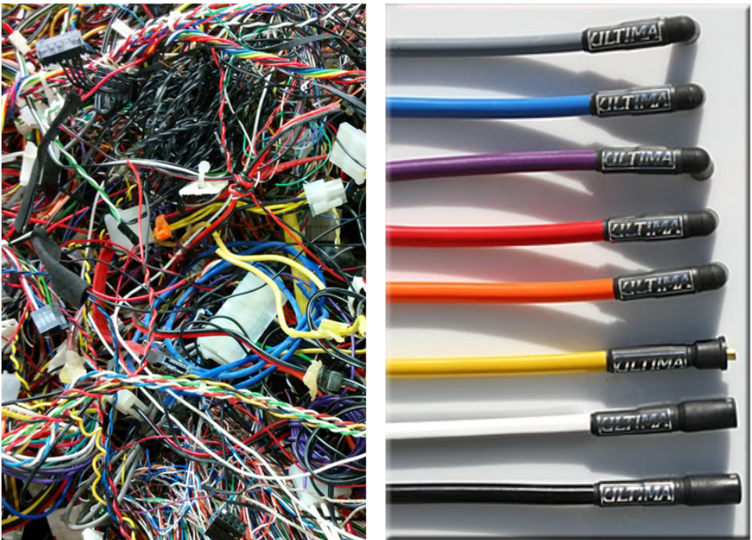
Prioritising alerts
At Satelligence we developed an alert prioritisation framework to convert confirmed changes into actionable alerts. First of all, we define forest to be at least 1ha continuous natural tree cover. To ensure that we do not falsely classify an area as deforested, we go back to 1984 using the Landsat satellite archive and make sure that the area has never been deforested before.
Furthermore, we draft a list of alert conditions together with our customers. They, not us, define which type of alerts are most important to them. These conditions vary from a minimum deforested area, to filtering deforestation that is within concessions, or maybe varying area thresholds depending on whether deforestation happens inside protected areas or on peatland.
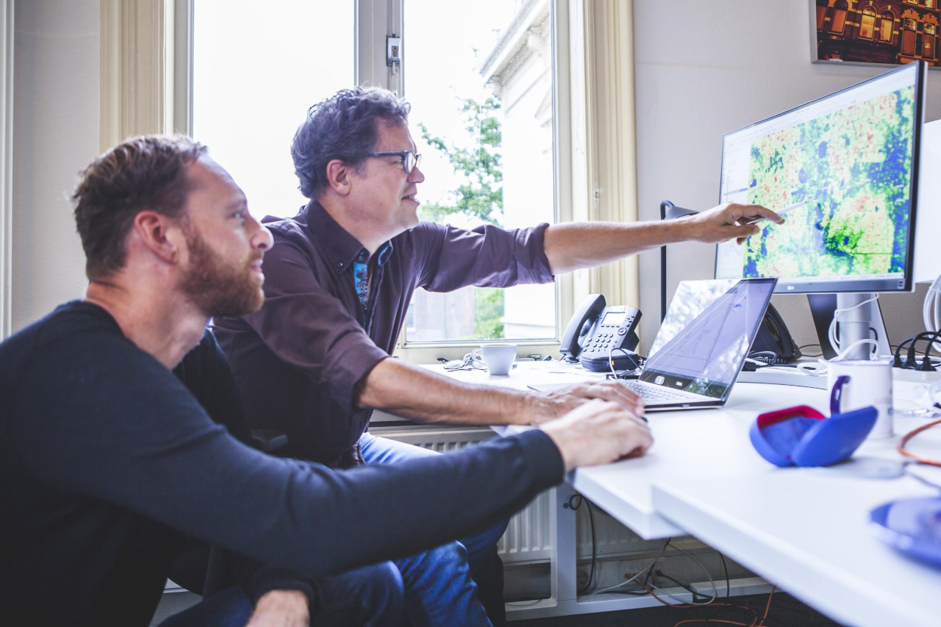
Blog 6 of this Global Coverage Story series outlines how we separate changes that occur in forests, plantations and other areas. That blog also covers how we go from relevant changes to tailored alerts in more detail.
From alerts to action
Prioritised deforestation results by themselves are useless. Action needs to be taken in order to give alerts real power. These follow-up actions involve sending in field teams to investigate an alert and engage with the involved parties. This ensures decreased likelihood of repeated illegal deforestation by the same parties.
Another measure that companies might take is to stop sourcing from particular areas, because the sustainability of the commodity grower can no longer be guaranteed. In other blogs in this series we will describe how our alerts are used by NGOs and companies.
Towards zero deforestation
Satelligence is committed to ending deforestation and we, and many of our customers, believe that we have the best system to monitor the progress towards zero deforestation supply chains. We are able to provide our customers with this information because we developed a change detection algorithm in collaboration with the world’s leading scientists, that runs on a cloud-based satellite processing engine.
Our change detection algorithm allows us to pinpoint deforestation all over the world at high accuracy. Because we incorporate radar satellite data we can look through the clouds and detect deforestation earlier than other comparable methods.
The engine processes the huge amounts of data we need efficiently, and furthermore, distills the necessary actionable information that our customers want. That actionable information gives customers the possibility to know what is happening in their supply chains immediately, and anywhere on the planet.
If you want to know more about satellite monitoring of deforestation in soft commodity supply chains at Satelligence follow us on Twitter and LinkedIn, check out other blogs on our website and register to our newsletter!
